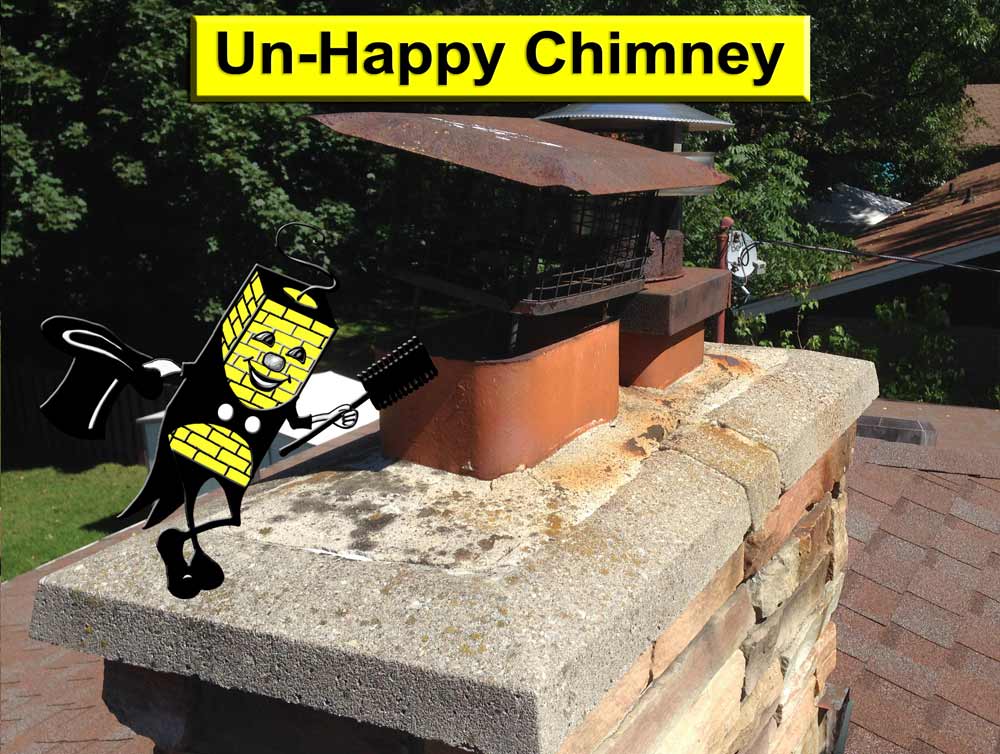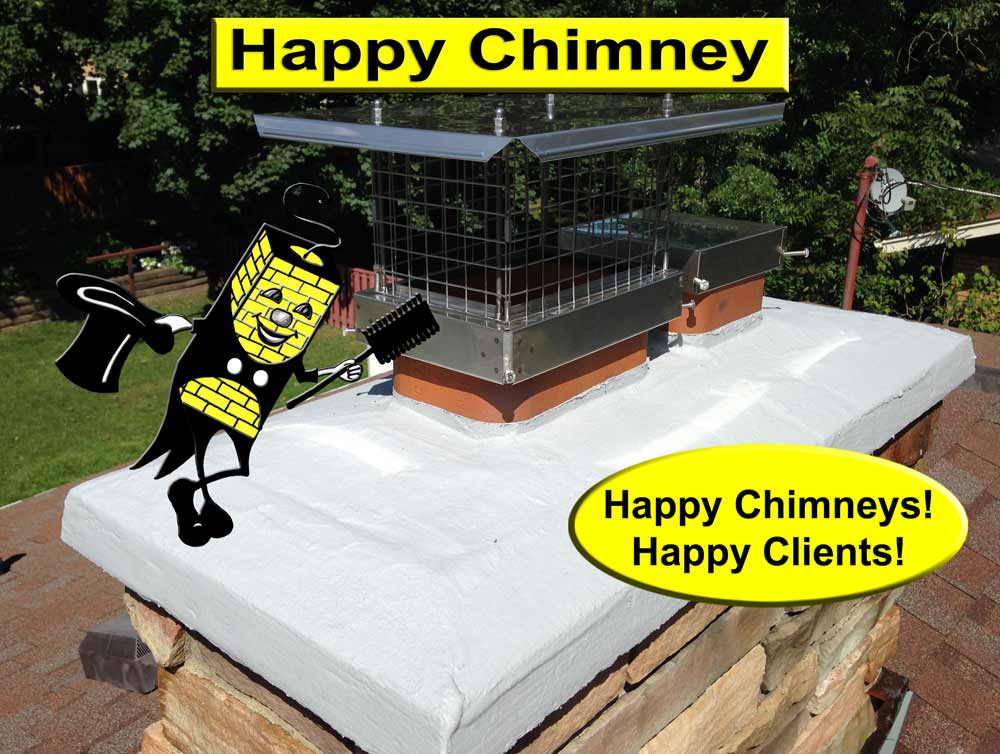Wood Burning Fireplace Insert Chimney Liners
For general information on chimney liners please see here.
If there is any kind of wood burning fireplace insert installed, it needs to have a stainless steel liner to the top of the chimney. Older fireplace inserts were installed directly into the fireplace opening with no liner, but after a number of safety issues were discovered a steel liner became a code requirement. An unlined insert should not be used until repairs have been made. They help prevent carbon monoxide and other gases from entering your home in addition to other, less obvious, safety reasons.
- The flue tiles and mortar inside a chimney almost always has cracks and damage. Even if it was well constructed originally, expansion/contraction, water damage, chimney fires, and age, make gaps and cracks in the flue system inevitable. Smoke leaks through these cracks and fills unseen areas outside the flue system with creosote. It can be between the flue tiles and bricks or inside the walls and structure of the house. Then, if there is a chimney fire, it can result in a house fire.
- Unlined inserts were often not cleaned well because they weigh several hundred pound and need to be completely removed from the fireplace for cleaning. Soot falls behind the insert, large amounts build up, and eventually the heat of the insert lights it on fire.
A seamless liner system prevents both of these problems and is much safer.
The round shape and proper sizing of a steel liner also creates a “cyclone” vortex effect, which makes the insert draft and burn better than the original square or rectangular flue tile system.
Dig Deeper
Want to learn more about specific types of chimney liners? Click on the links below to learn more!
Happy Chimneys
We love making chimneys happy again. Drag the yellow box below the image to see how we make an un-happy chimney happy again.


